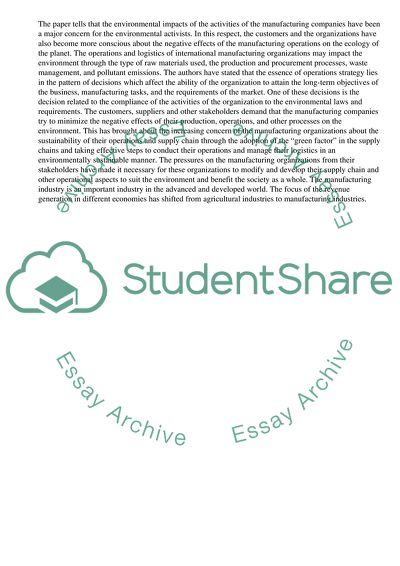Cite this document
(“The Relationship between Logistics, Operations and the Environment in Research Paper”, n.d.)
The Relationship between Logistics, Operations and the Environment in Research Paper. Retrieved from https://studentshare.org/management/1641079-from-an-environmental-perspective-discuss-the-relationship-between-logistics-operations-and-the-environment-in-international-manufacturing-organizations
The Relationship between Logistics, Operations and the Environment in Research Paper. Retrieved from https://studentshare.org/management/1641079-from-an-environmental-perspective-discuss-the-relationship-between-logistics-operations-and-the-environment-in-international-manufacturing-organizations
(The Relationship Between Logistics, Operations and the Environment in Research Paper)
The Relationship Between Logistics, Operations and the Environment in Research Paper. https://studentshare.org/management/1641079-from-an-environmental-perspective-discuss-the-relationship-between-logistics-operations-and-the-environment-in-international-manufacturing-organizations.
The Relationship Between Logistics, Operations and the Environment in Research Paper. https://studentshare.org/management/1641079-from-an-environmental-perspective-discuss-the-relationship-between-logistics-operations-and-the-environment-in-international-manufacturing-organizations.
“The Relationship Between Logistics, Operations and the Environment in Research Paper”, n.d. https://studentshare.org/management/1641079-from-an-environmental-perspective-discuss-the-relationship-between-logistics-operations-and-the-environment-in-international-manufacturing-organizations.


